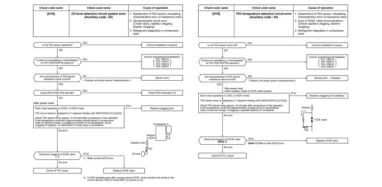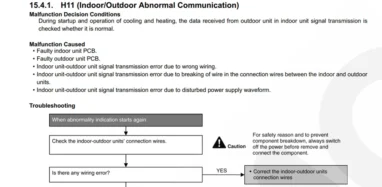Did you just come across the term TXV somewhere on the internet & now you are wondering what does it mean?
What is TXV in HVAC? What does it mean and what’s its role? How does it work?
Do you have such questions in your mind? Yes, you have and that’s why you are here reading this article. So, be ready, and let’s explore the answers to all of your questions about TXV & HVAC.
What is a TXV
Do you have no idea what even TXV is? Don’t worry, here is everything you need to know about it:
Well, the term TXV is an abbreviation of Thermal Expansion Valve.
A thermal expansion valve is one of the most important parts of an HVAC system.
Thermal expansion valves are responsible for regulating the flow of refrigerant that is released into the evaporator section of your HVAC system.
If you want your air conditioner to work normally with maximum efficiency then the TXV valve of your AC should also function normally.
What does TXV mean in HVAC
Now you must be thinking that what is the meaning of TXV in your HVAC system?
Well, TXV has only one role in an HVAC system.
The job of a thermal expansion valve is to control the amount of refrigerant that is released into the evaporator section of your air conditioner.
The controlled flow of refrigerant into the evaporator is very important for maximizing the efficiency of your air conditioner unit and also preventing the backflow of the refrigerant into the compressor of the AC.
The TXV valves are also given a second name which is “Metering Devices” due to the type of role they perform.
Therefore, in simple words, TXV valves are very important for maintaining the efficiency of HVAC systems.
How does an HVAC TXV work
Are you thinking about how does a TXV valve works in an HVAC system? We will make it easy for you to understand:
TXV valve in an HVAC system controls the amount of refrigerant that is released into the evaporator section of your air conditioner.
TXV valve maintains the correct amount of refrigerant supply to the evaporator by keeping in view the amount of refrigerator that boils off or evaporates in the evaporation section.
The TXV valves work by keeping two things in consideration:
- The temperature of the vapors of refrigerant when they leave the evaporator.
- The pressure that is present in the evaporator.
TXV performs its function with the help of a movable pin to control the flow of refrigerant released into the evaporator section of the HVAC system.
When is a TXV valve needed
Are you wondering when do you need a TXV valve? Here is what you need to know:
Most of the air conditioner units have built-in TXV valves.
Normally, you need a TXV valve when the efficiency of your AC has decreased.
A TXV valve will regulate the flow of refrigerant in the evaporator and hence improve the efficiency of the AC.
If your AC already has a TXV but its efficiency has decreased then you need to check the TXV valve to ensure if it is working fine. If it is not, then it means that you need to get a new one to restore the maximum efficiency of your air conditioning system.
How to check TXV in HVAC
Now how do you check the TXV in your HVAC system? How do you find out there is something wrong with the TXV valve of your air conditioner?
It is so simple & you can easily do it.
Step #1 – Start with checking the evaporator of your air conditioner.
Step #2 – You will find a TXV sensing bulb at the suction line.
Step #3 – Remove that TXV sensing bulb at the suction line.
Step #4 – Check the superheat, pressure, and subcooling.
Step #5 – If you see no change then it means that there is something wrong with the TXV valve.
Using Ice Water:
One more method is by using ice water.
Take the sensing bulb and put it in ice water. Then check the superheat, pressure, and subcooling again.
What are the signs of a bad TXV?
Are there any specific signs which tell you that the TXV valve of your air conditioner is not working fine?
Yes! Here are the signs of a bad TXV:
1. Warm air
If your air conditioner unit is blowing warm air then it is a symbol of a bad TXV valve.
2. Frost on the evaporator
If frost has formed on the evaporator of your air conditioner, then it is a sign of a bad TXV valve.
3. Compressor running constantly
If the compressor of your air conditioner is running constantly then it is also a big sign of a bad TXV valve.
HVAC bad TXV symptoms
If you want to check the symptoms and diagnose a bad TXV valve then here are all the things you need to look for:
- Check for low condenser split.
- Check for low evaporator pressure.
- Check for low condensing pressure.
- Check for the low amp draw of the compressor.
- Check for normal to high subcooling of the condenser.
- Check for short cycling (at low-pressure control).
- Check for more than normal discharge temperatures.
- Check for compressor and high evaporator superheats.
What causes a TXV to freeze?
Sometimes, the TXV valve freezes and affects the performance of the air conditioner unit. Ever wondered why that happens? Here is your answer:
- If the superheat is too low.
- If there is low refrigerant.
- If there is too much moisture in the refrigerant.
- If the refrigerant filter drier is restricted.
These are the most commonly found reasons that are responsible for the freezing of a TXV valve.
How much does it cost to replace a TXV?
Are you planning to replace the TXV of your air conditioner system but don’t know how much it is going to cost you?
Well, on average, replacing the TXV of an air conditioner unit cost somewhere between $800 to $1200.
However, the exact price may vary in different regions depending upon the price of labor and different equipment.
Is TXV better than piston?
Yes, TXV is better than a piston.
Experts say that TXV better regulates the flow of refrigerant into the evaporator and improves the efficiency of the HVAC system as compared to a fixed piston.
Especially if you live in an area with varying environmental conditions then a TXV valve will provide you with even better efficiency.
It increases the efficiency and life of your air conditioning unit.


